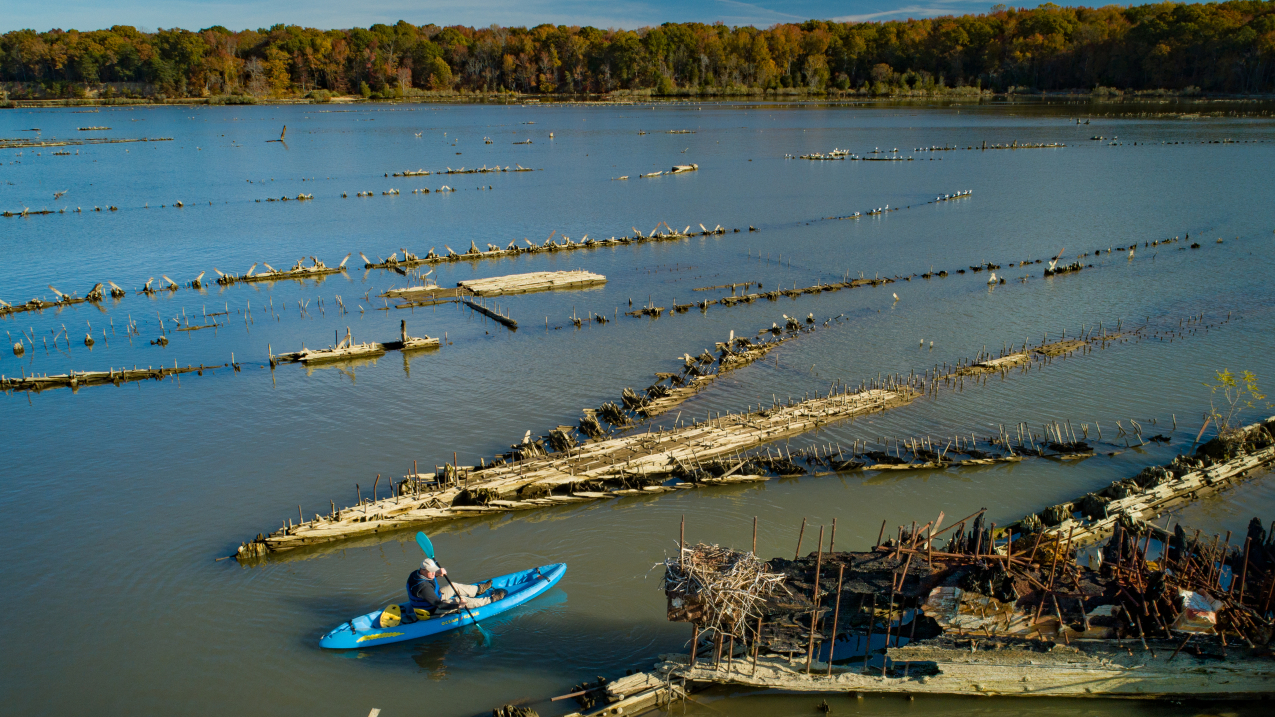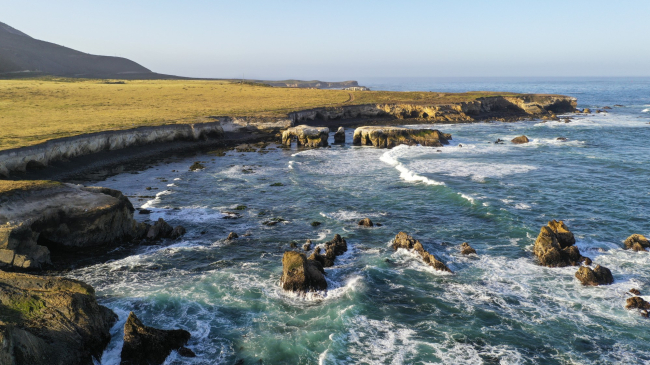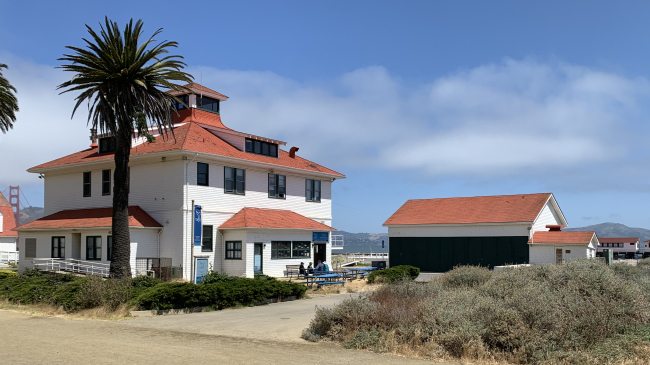
Aerial view of Mallows Bay-Potomac River National Marine Sanctuary, where NOAA is investing $5 million from the Inflation Reduction Act to support pre-construction and design requirements for a sanctuary visitor center in Charles County, Maryland. The new interpretive center would help make the sanctuary more accessible to the public, including diverse and historically underserved communities, by providing a place for people to learn about the sanctuary and related cultural and Native American heritage. (Image credit: NOAA)
NOAA will invest $5 million from the Inflation Reduction Act in Mallows Bay-Potomac River National Marine Sanctuary to support pre-construction and design requirements for a sanctuary visitor center in Charles County, Maryland.
NOAA intends to partner with the State of Maryland and Charles County, Maryland, co-managers of the sanctuary, on development of the new visitor center.
“NOAA’s national marine sanctuaries facilities are a gateway to our greatest underwater treasures — and key to maintaining them,” said U.S. Secretary of Commerce Gina Raimondo. “This funding for a visitor center at Mallows Bay-Potomac River National Marine Sanctuary is an important step towards increasing tourism and education efforts in the region, and it is a testament to President Biden’s commitment to investing in America.”
"Designated as a National Marine Sanctuary as well as a National Treasure by the National Trust for Historic Preservation and the National Register of Historic Places, Mallows Bay is vital to our state and its coastal communities," said Congressman Steny Hoyer (MD-05). "I was pleased to see NOAA announce $50 million in funding through the Inflation Reduction Act for a visitor center at Mallows Bay. This project will serve as a focal point for telling the story of Mallows Bay and is yet another example of how the Inflation Reduction Act and the Investing in America Agenda continue to deliver results for Marylanders. I was proud to work with Senators Cardin and Van Hollen to secure additional funding for Mallows Bay, and I look forward to continuing to work with our Maryland Delegation, the Regional Leadership Council and the Biden-Harris Administration to implement the Inflation Reduction Act and the rest of our Investing in America agenda."
The new interpretive center would help make the sanctuary more accessible to the public, including diverse and historically underserved communities, by providing a place for people to learn about the sanctuary and related cultural and Native American heritage. The sanctuary, located in the tidal Potomac River, is situated within the traditional homeland and cultural landscape of the Piscataway Conoy Tribe, the Piscataway Indian Nation of Maryland and the Patawomeck Indian Tribe of Virginia. The visitor center would also facilitate economic opportunity as a focal point for recreation and tourism.
“Charles County is excited about the possibility of a visitor center to bring more awareness to this unique habitat that teaches history and protects our ecosystem,” said Kelli Beavers, Director of Recreation, Parks and Tourism, Charles County Government.
Mallows Bay-Potomac River National Marine Sanctuary, located 40 miles south of Washington D.C., is home to a diverse collection of more than 100 known historic shipwrecks that date back to the Civil War, and potentially to the American Revolutionary War. Included among these vessels are the sunken fragile remains of the largest “Ghost Fleet,” wooden steamships built for the U.S. Emergency Fleet Corporation during World War I.
The sanctuary is part of America’s National Marine Sanctuary System, a network of underwater parks encompassing more than 620,000 square miles of marine and Great Lakes waters. The network includes a system of 15 national marine sanctuaries and Papahānaumokuākea and Rose Atoll marine national monuments.
These investments are part of a $3.3 billion total investment from the Inflation Reduction Act that is enabling NOAA to build on its commitment to help Americans — including tribes and vulnerable populations — prepare, adapt and build resilience to weather and climate events; improve supercomputing capacity and research on weather, oceans and climate; strengthen NOAA’s hurricane hunter aircraft and fleet; and replace aging NOAA facilities. Stay updated about NOAA’s Inflation Reduction Act investments.
Media contact
Mark Losavio, mark.losavio@noaa.gov



